- Home
- Filet Crochet
- Filet Crochet Patterns (Charts)
Filet Crochet Patterns: How to Analyze Filet Crochet Charts
Last Updated 11-01-2023
Filet crochet patterns are not always granny's doilies on the coffee table. Filet crocheting is a universal technique that may seem antiquated but in reality it is still very much in vogue.
It allows you in a very simple way to create your own patterns which won't remind you of those doilies which your grandmother adored so much.
Develop your ability
to analyze filet crochet charts and you will be rewarded by the chance to
demonstrate the results of your creativity making the unique garments and other projects that are one of a kind
Filet crocheting is really a very flexible techniques. Like none other technique, filet pattern allows you easily to change elements of the filet crochet charts, make them bigger or smaller, add three dimensional elements to them, and so on.
You don't have to be a very experienced crocheter to be able to do it.
Nevertheless, some basic skills in filet crocheting are necessary. To refresh you memory about this technique, check very helpful links from Filet Crochet page.
Filet patterns will look great both whether you crochet fine silk or cotton thread or you are going to use thick wool yarn. That's why many crocheters prefer this type of filet crochet patterns when they consider variants for crocheting a new project.
All filet crochet patterns consist of two kinds of meshes:
- Opened
- Filled (or solid)
Opened and filled.... Hm, not too many variants of stitches to demonstrate your creativity. Nevertheless, it does require a bit of thought when viewing a filet crochet chart for the first time.
Filet Crochet Patterns: Series of Double Crochets and Chains
The typical crochet mesh is created by making double crochets in the same space to create the filled or solid square. The open square are formed by making chain stitches.
Filet Crochet Patterns. Small Groups of the repeated filled meshes
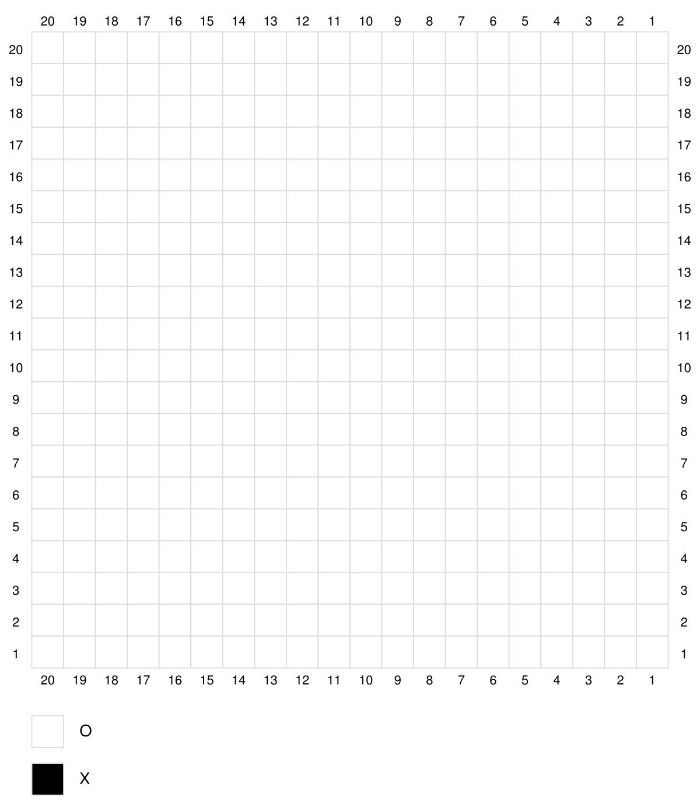
When designing your filet crochet patterns, you will want to start with an empty chart. The one above was made with Stitch Fiddle, but you can also use a spread sheet such as Excel to create the chart.
If you don't like to count stitches too much following complicated patterns, use small groups of repeated vertical or horizontal filled meshes, to create a crochet fabric.
You can make different variants of the same pattern by changing the number of filled meshes and their location on the crochet fabric. Every time it will look different.
Fill in the Filet Crochet Chart With Your Design
This is a simple heart design, but I could have easily created my initials as the design.
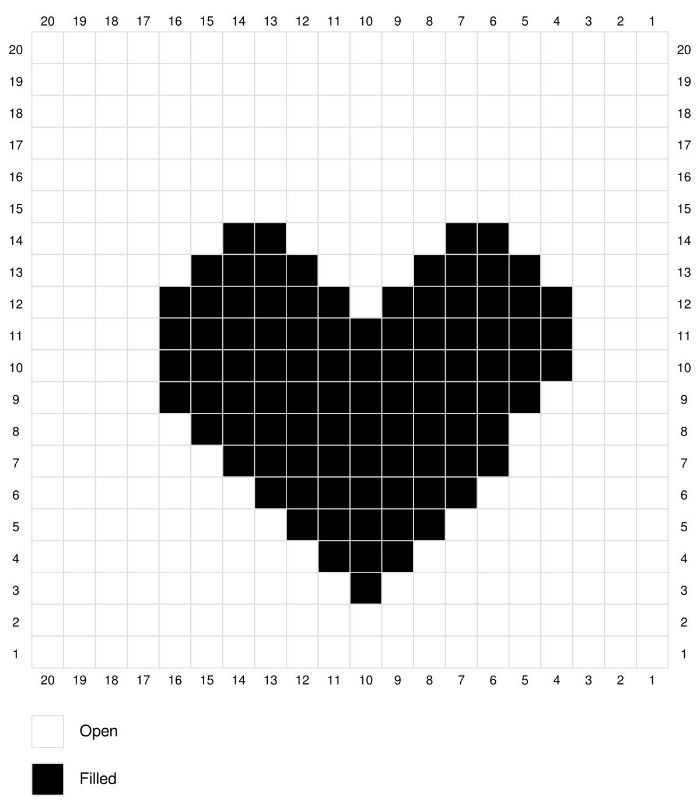
Creating Positive/Negative Conversion of the Same Pattern
Filet crocheting is the only kind of crochet technique which have a unique feature. It allows you to make positive/negative conversion of the same pattern.
Compare Pattern #1 and Pattern #2 below. Solid square is a filled mesh, clear square is an opened one.
This is a typical example of a negative-positive pattern. Using the same chart where the majority of meshes are filled for the winter garments, you can easily convert it to a more lacy/opened meshes variant for a light summer dress.
Pattern # 1
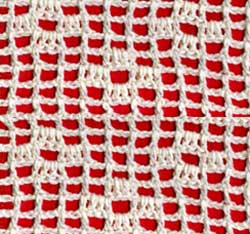
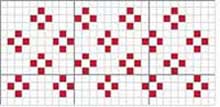 Crochet chart for Pattern # 1
Crochet chart for Pattern # 1Pattern # 2
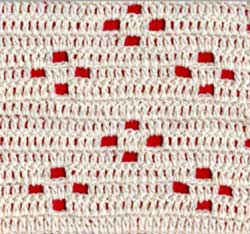
Opposite or Negative Example of the Heart Pattern Above.
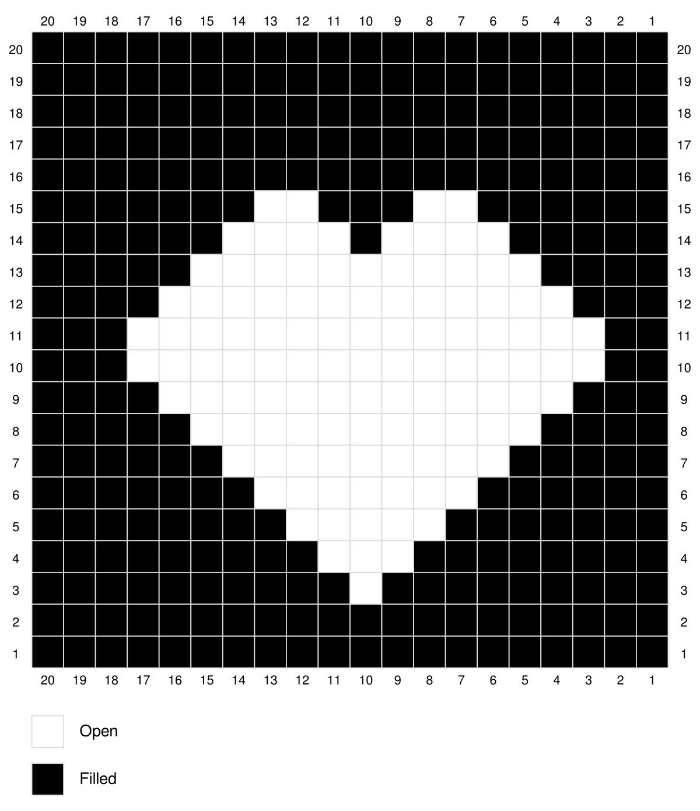
As I've already mentioned, filet patterns are the combinations of the opened and filled meshes. Change their rhythm or position and you have completely new, pattern like this Zig zag Patterns #2 and #3 below, for instance.
Pattern # 3: ZigZag or Ripple Effect
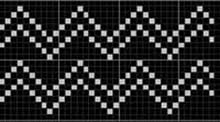
Pattern # 4: Diamond Effect
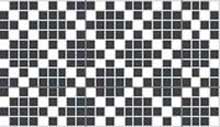
Rules for Doing Filet Crochet
Here are a few rules if you are planning to use a thick yarn. You want to create a crochet piece that looks like a bunch of squares. Sometimes if you work with double crochet stitches, you may end up having rectangles rather than squares. To make meshes look neat:
- Use a larger hook size.
- Instead of double crochet (dc) use taller stitches: treble
crochet (tr), or double treble (dtr)
- To alter a mesh shape, crochet 3-4 horizontal chains instead of the traditional 2 chains between double crochets at the beginning and the end of each cell.
- If your double crochet stitches are too short, work extended double crochet instead.
Would you like to make your filet crochet pattern look special? There are many ways to do these changes. You can substitute some of the meshes by 3-D elements. Here is how:
Filet Crochet Patterns Using Puff Stitches









